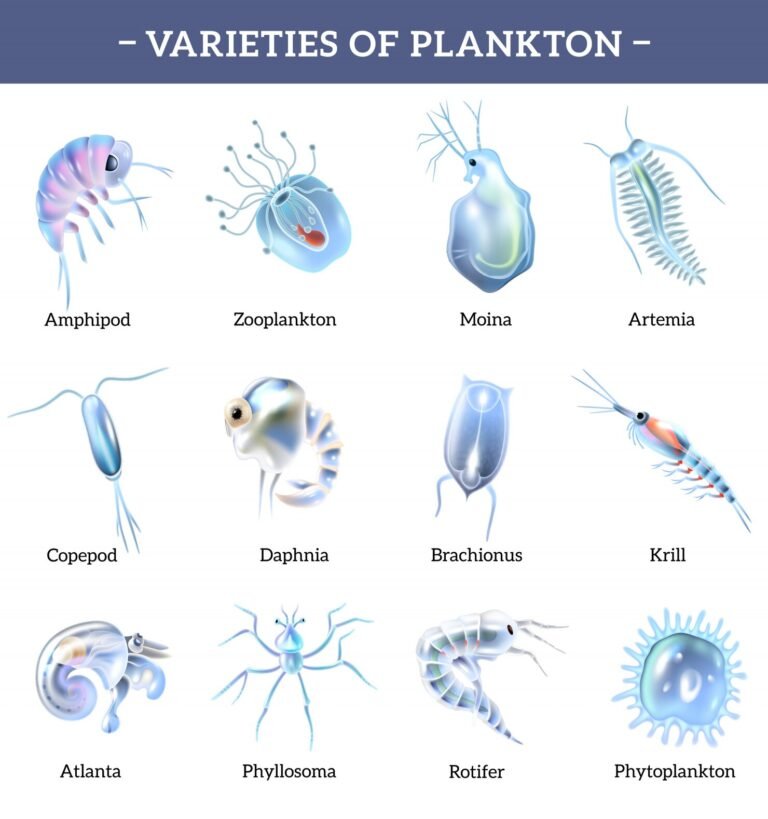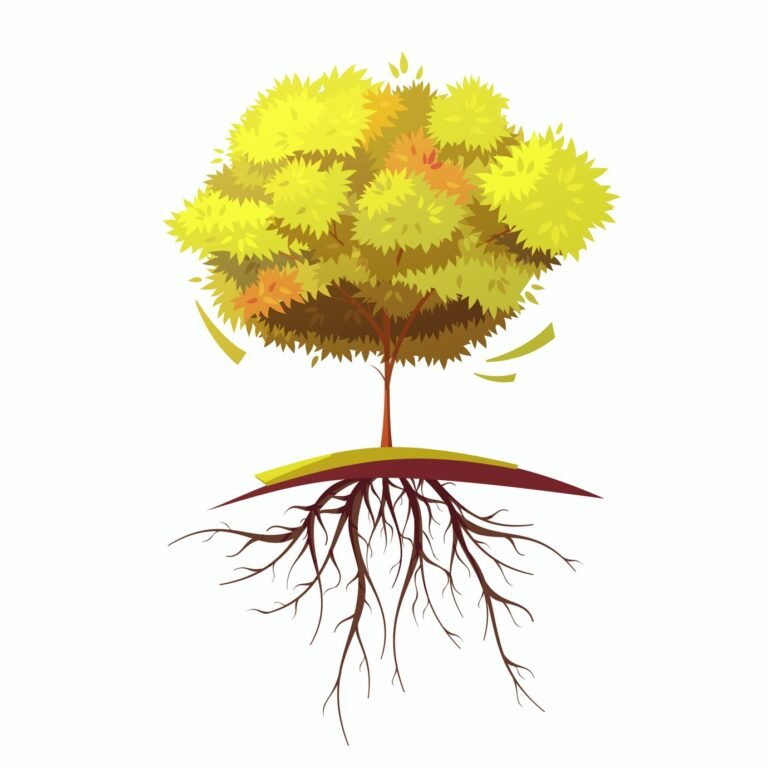10 Invasive Plant Species Examples
If you’ve ever battled a fast-growing plant that seems to take over your garden overnight, you’re not alone. Invasive plants are more than just a backyard nuisance—they’re a global ecological threat. These non-native species spread rapidly, outcompeting local flora, disrupting ecosystems, and causing significant economic damage. In the United States alone, invasive species are responsible for an estimated $138 billion in damages annually, affecting agriculture, water resources, and biodiversity.
But what exactly makes a plant “invasive”? It’s not just about being foreign to an area. Invasive plants possess specific traits that allow them to dominate new environments, often at the expense of native species. Understanding these characteristics is crucial for managing and mitigating their impact.
In this article, we’ll look into the defining features of invasive plants, explore real-world examples, and discuss strategies to combat their spread. By gaining insight into these green invaders, we can better protect our natural landscapes and biodiversity.
In This Article
- What Makes a Plant “Invasive”?
- 1. Kudzu (Pueraria montana var. lobata)
- 2. Japanese Knotweed – Reynoutria japonica (synonym: Fallopia japonica)
- 3. Giant Hogweed (Heracleum mantegazzianum)
- 4. Water Hyacinth (Eichhornia crassipes)
- 5. Purple Loosestrife (Lythrum salicaria)
- 6. Garlic Mustard (Alliaria petiolata)
- 7. Tree of Heaven (Ailanthus altissima)
- 8. English Ivy (Hedera helix)
- 9. Yellow Star-Thistle (Centaurea solstitialis)
- 10. Common Reed (Phragmites australis)
- Conclusion: Fighting Invasives Effectively
What Makes a Plant “Invasive”?
An invasive plant is typically characterised by three main criteria:
- Non-native to the ecosystem: The plant originates from a different region or country and has been introduced, either intentionally or accidentally, to a new environment.
- Aggressive spread: It reproduces and spreads rapidly, often outcompeting native species for resources like sunlight, water, and nutrients.
- Harmful impact: The plant causes ecological, economic, or health-related harm in its new environment.
Dr. Jennifer Funk, an ecologist at Chapman University, emphasises that the success of invasive plants is not solely due to their resilience. Instead, it stems from specific traits that enable them to outcompete native species, such as efficient resource acquisition and adaptability to diverse environmental conditions.
In her research, Funk explains that invasive plants often outmanoeuvre native species by optimising growth and reproduction, particularly in resource-limited environments. For example, some invasive plants have higher photosynthetic rates, allowing for faster growth. Others display greater phenotypic plasticity, enabling them to adjust to a wide range of conditions. Certain species have also developed specialised root systems to access water and nutrients more effectively, while others modify their growth patterns in response to varying light levels. These adaptive strategies provide a significant competitive advantage, making it difficult for native plants to thrive.

1. Kudzu (Pueraria montana var. lobata)
Kudzu (Pueraria montana var. lobata) was introduced to the United States in 1876 from East Asia, initially admired for its rapid growth and lush foliage. By the 1930s, it was widely promoted for erosion control, with the U.S. government distributing millions of plants across the Southeast. However, its aggressive nature soon became apparent.
Under ideal conditions, kudzu can grow up to a foot per day, enveloping trees, buildings, and power lines. This rampant growth smothers native vegetation, disrupts ecosystems, and causes significant economic damage. Estimates suggest that kudzu inflicts between $100 million and $500 million in annual economic losses in the U.S., affecting forestry, agriculture, and infrastructure.
In urban areas like Atlanta, kudzu has been responsible for the loss of nearly 30% of native tree cover annually. Innovative control methods, such as employing goats to graze on kudzu-infested areas, have been implemented in some regions to manage its spread.

2. Japanese Knotweed – Reynoutria japonica (synonym: Fallopia japonica)
Japanese knotweed was introduced to the U.S. in the 19th century as an ornamental plant, valued for its bamboo-like stems and heart-shaped leaves. Native to East Asia, it quickly became invasive due to its robust growth and resilience.
This plant is notorious for its ability to grow through concrete and asphalt, causing damage to buildings, roads, and flood defences. Its presence can significantly reduce property values and complicate real estate transactions. A 2018 study published in PeerJ found that Japanese knotweed poses a greater risk to infrastructure than many native plants, leading to substantial economic costs for management and repair.
In the UK, the annual cost of managing Japanese knotweed is estimated at £165.6 million, highlighting the financial burden it places on homeowners and public agencies.

3. Giant Hogweed (Heracleum mantegazzianum)
Giant Hogweed is a towering plant, native to the Caucasus Mountains, that was introduced to the U.S. in 1917 as an ornamental addition to gardens. Its impressive size and umbrella-like clusters of white flowers might seem appealing, but this plant harbours a dangerous secret.
The sap of Giant Hogweed contains furanocoumarins, compounds that react with sunlight to cause severe skin inflammation known as photodermatitis. Contact with the sap, followed by exposure to sunlight, can result in painful blisters, long-lasting scars, and even temporary or permanent blindness if it comes into contact with the eyes.
If you encounter this plant, it’s crucial to avoid direct contact. Wear protective clothing, including gloves and long sleeves, when handling or near the plant. Always report sightings to local environmental agencies to ensure proper management and control.
In the United Kingdom, Giant Hogweed has become a significant concern. Annually, hundreds of injuries related to contact with this toxic plant are reported, due to its sap causing severe skin burns when exposed to sunlight. Managing its spread is also costly—some estimates suggest that eradication efforts cost local councils approximately £2.4 million each year, though this figure may be an underestimate.

4. Water Hyacinth (Eichhornia crassipes)
Water Hyacinth, native to the Amazon Basin, was introduced to the U.S. in the late 19th century, likely during a World’s Fair. Its attractive purple flowers and rapid growth made it a popular ornamental plant for ponds and water gardens. However, its ability to reproduce quickly and form dense mats on water surfaces has led to significant ecological issues.
The dense mats formed by Water Hyacinth block sunlight from reaching submerged plants, disrupting photosynthesis and reducing oxygen levels in the water. This oxygen depletion can lead to the death of fish and other aquatic organisms. Additionally, these mats can hinder water flow, clog irrigation systems, and impede navigation.
In Florida, Water Hyacinth has been a persistent problem. By the early 1960s, it covered more than 120,000 acres of public lakes and navigable rivers. Intensive management efforts have since reduced its presence, but it remains a challenge. In some areas, the plant can double in size within a week, making control efforts ongoing and resource-intensive

5. Purple Loosestrife (Lythrum salicaria)
Purple Loosestrife is native to Europe and Asia. It was introduced to North America in the early 1800s, likely through ship ballast and ornamental gardens. Since then, it has spread extensively across the continent, particularly in wetlands and along waterways.
This plant poses a significant threat to wetland ecosystems. It forms dense stands that outcompete native vegetation, leading to reduced biodiversity. Wildlife that depends on native plants for food and habitat, such as ducks and amphibians, is adversely affected. Moreover, the dense growth can alter hydrological patterns, impacting water flow and quality.
Horicon Marsh, one of the largest freshwater marshes in the U.S., experienced a severe infestation of Purple Loosestrife. At its peak, the invasive plant displaced over 50% of native plant species, drastically altering the habitat. In response, the Wisconsin Department of Natural Resources implemented a biocontrol program in 1994, introducing four insect species from Europe that specifically target Purple Loosestrife. This approach has been effective in controlling the spread without harming native plants.

6. Garlic Mustard (Alliaria petiolata)
Garlic Mustard is native to Europe and was introduced to North America in the mid-1800s for culinary and medicinal purposes. It has since become a pervasive invasive species, particularly in forested areas.
Garlic Mustard is allelopathic; it releases chemicals into the soil that inhibit the growth of native plants and beneficial fungi essential for tree health. This disruption can lead to decreased biodiversity and hinder forest regeneration. Additionally, it can dominate the forest understory within 5-7 years, outcompeting native spring wildflowers and altering habitat structures.
Effective control of Garlic Mustard involves early detection and removal. Hand-pulling is recommended before the plant sets seed, typically between May and June. It’s crucial to remove the entire root system to prevent regrowth. Proper disposal of the plants is also important to avoid further spread.

7. Tree of Heaven (Ailanthus altissima)
Native to China, the Tree of Heaven was introduced to the United States in 1784 as an ornamental tree. Its rapid growth and ability to thrive in poor soil conditions made it popular in urban landscaping. However, these same traits have contributed to its aggressive spread across various environments, particularly in disturbed urban areas.
The Tree of Heaven disrupts native ecosystems by releasing soil-borne chemicals that hinder the growth of surrounding vegetation. This gives it a strong advantage over native species, allowing it to spread rapidly. Its abundant seed production and ability to regenerate from roots and stumps make it especially aggressive, often reshaping entire habitats and significantly reducing biodiversity.
Controlling the spread of the Tree of Heaven is challenging due to its resilience and reproductive strategies. Mechanical removal often leads to resprouting, and chemical treatments require careful application to be effective. Moreover, this tree serves as a host for the spotted lanternfly, an invasive insect that further threatens agriculture and native plants.

8. English Ivy (Hedera helix)
English Ivy, native to Europe, was introduced to the United States during the colonial era as an ornamental plant. Its aesthetic appeal and ground-covering ability made it a common choice for landscaping. However, it has since escaped cultivation and become invasive in many parts of the country.
English Ivy aggressively spreads across forest floors and climbs trees, often leading to detrimental effects on native vegetation. By forming dense mats, it suppresses the growth of understory plants and can cause trees to weaken and fall due to the added weight and competition for resources. Studies have shown that areas infested with English Ivy experience significant declines in plant diversity, disrupting local ecosystems.
Managing English Ivy infestations requires persistent effort. Mechanical removal is labor-intensive, and chemical treatments must be used cautiously to avoid harming native species. Restoration of affected areas often involves replanting native vegetation to reestablish ecological balance.

9. Yellow Star-Thistle (Centaurea solstitialis)
Yellow Star-Thistle, native to the Mediterranean region, was inadvertently introduced to the United States in the 19th century through contaminated seed imports. Since then, it has spread extensively, particularly in California, where it thrives in disturbed soils and outcompetes native vegetation.
This invasive weed has become a significant concern for California’s agriculture, especially for cattle ranchers. It invades pastures, reducing the availability of forage for livestock. According to a study published in Rangeland Ecology & Management, the annual loss of livestock forage value due to Yellow Star-Thistle on private lands in California is estimated at $7.65 million. Additionally, ranchers spend approximately $9.45 million each year on control measures, bringing the total economic impact to over $17 million annually.
Ranchers in northern California face an ongoing battle against Yellow Star-Thistle. The plant’s spiny flower heads deter cattle from grazing, rendering large swaths of pastureland unusable. Efforts to control its spread include mechanical removal, herbicide application, and prescribed burning. However, these methods require continuous application, and the plant often rebounds if management efforts lapse.

10. Common Reed (Phragmites australis)
The Common Reed, particularly the invasive European strain, was introduced to North America in the 1800s. It has since become widespread across wetlands, especially in the northeastern United States. This aggressive grass forms dense stands that outcompete native plants and alter the structure and function of wetland ecosystems.
Phragmites australis significantly impacts wetland environments by displacing native vegetation, reducing biodiversity, and altering hydrological regimes. Its dense growth can impede water flow, increase fire risk, and diminish habitat quality for wildlife. Moreover, its decomposition can raise marsh elevation, potentially affecting the natural flooding cycles essential for certain wetland species.
In New Jersey, wetland restoration projects have grappled with the challenges posed by Phragmites. For instance, at the Stone Harbor Bird Sanctuary, efforts to restore native vegetation involved the removal of Phragmites stands. Despite initial successes, the invasive reed often reestablishes itself if not managed persistently. This shows the importance of long-term maintenance and monitoring in invasive species management.

Conclusion: Fighting Invasives Effectively
- Learn Early Detection: Early identification is crucial. Platforms like iNaturalist empower individuals to report sightings of invasive species, aiding in timely interventions. Citizen science initiatives have proven effective in supplementing professional surveys, enhancing our collective ability to monitor and respond to invasions.
- Physical Control: Manual removal methods, such as hand-pulling or mowing, are effective, especially when executed before the plants set seed. Consistency is key; without regular maintenance, invasive species like Phragmites can quickly rebound, as observed in various wetland restoration projects.
- Chemical Control: When manual methods fall short, herbicides can be employed judiciously. It’s imperative to follow environmental regulations and guidelines to minimise impacts on non-target species. The U.S. Environmental Protection Agency has developed strategies to protect endangered species from exposure to herbicides, emphasising the importance of informed application.
- Restoration Planting: Post-removal, reintroducing native plants is vital to prevent re-invasion. Native species are adapted to local conditions and can outcompete invasives when properly established. Restoration efforts, such as those in the Pinelands National Reserve, have successfully reestablished native biodiversity.
- Advocate and Educate: Community Involvement Amplifies Impact. Supporting legislation that restricts the sale of invasive species and participating in local initiatives fosters a collective defense against invasives. Educational events, like seed swaps and workshops, play a pivotal role in raising awareness and promoting native plant use.







